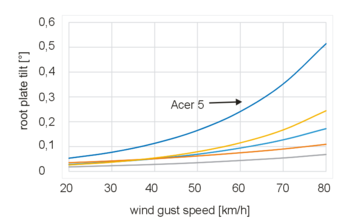Tree stability and peace of mind.
- Greenwood Consulting

- Jul 31, 2020
- 1 min read
Have you ever wondered why some trees, that look perfectly healthy, fall over during strong winds? Yet, other trees that are doing the limbo, remain stable and immune to windy storms.
Greenwood Consulting can provide in depth tree inspections to obtain information about a trees stability defined by it's root anchoring force in the ground.
In depth tree inspections can provide peace of mind with regards to the stability of trees in public spaces, urban environments and construction projects.
Wind-Reaction-Measurement records the dynamic sway motion of a tree in naturally occurring wind, by measuring the root plate tilt.
Typical applications for Wind-Reaction-Measurements are:
Confirmation of stability If trees only show a small root plate tilt, even in strong wind gusts, one can assume a stable root system.
Identification of trees with root anchorage problems After measuring tree groups comparing the results can identify trees with conspicuously large root plate tilt.
Combination with static tree pulling test with regards to stability If a tree with increased tilt angles has been identified, it is often meaningful to follow up with a static pulling test to measure the trees reaction to a known force.
Surveillance of trees near construction Sustained changes in a trees tilt angle during ground works (e.g. placing of sheet pile walls) can be detected.
Long term monitoring of trees Trees suspected of having root anchorage problems can be inspected in regular intervals to check whether:
The root plate tilt in wind decreases (tree grows new and stronger roots)
The root plate tilt in wind increases (roots are dying off or get damaged otherwise)
The reaction remains constant
If you require further information please contact our qualified Consultant Arborists at Greenwood Consulting.









Comments